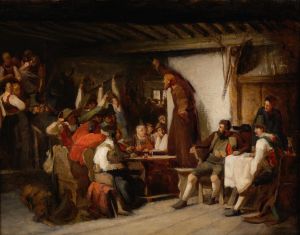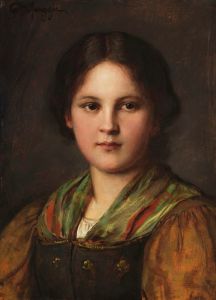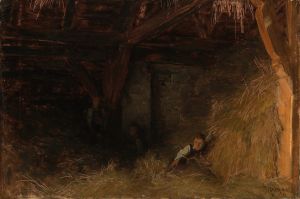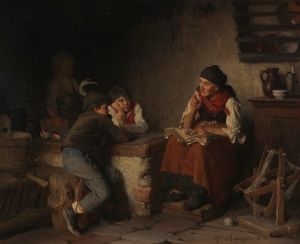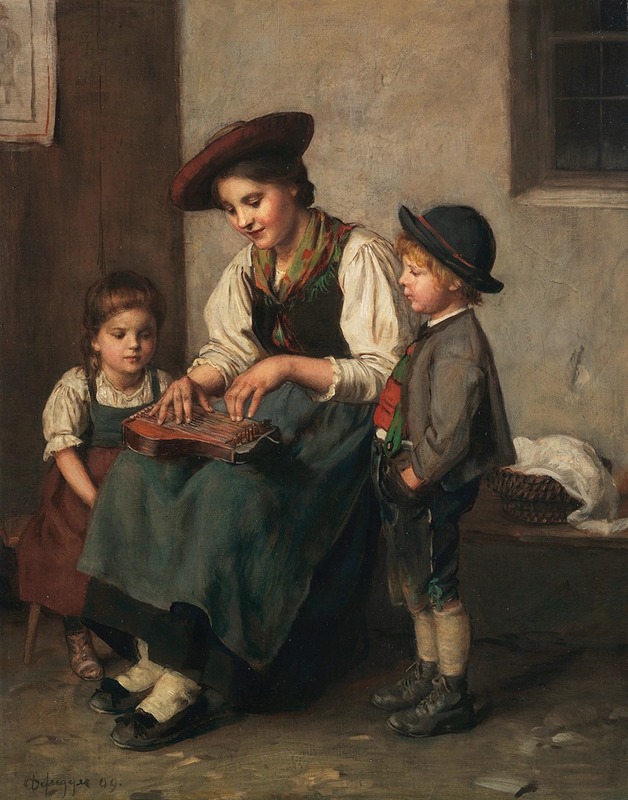
Die Zitherspielerin
A hand-painted replica of Franz von Defregger’s masterpiece Die Zitherspielerin, meticulously crafted by professional artists to capture the true essence of the original. Each piece is created with museum-quality canvas and rare mineral pigments, carefully painted by experienced artists with delicate brushstrokes and rich, layered colors to perfectly recreate the texture of the original artwork. Unlike machine-printed reproductions, this hand-painted version brings the painting to life, infused with the artist’s emotions and skill in every stroke. Whether for personal collection or home decoration, it instantly elevates the artistic atmosphere of any space.
Franz von Defregger was an Austrian artist known for his genre paintings that often depicted scenes from Tyrolean life. One of his notable works is "Die Zitherspielerin," which translates to "The Zither Player." This painting exemplifies Defregger's ability to capture the essence of rural life and the cultural practices of the Tyrolean people during the 19th century.
"Die Zitherspielerin" portrays a young woman playing the zither, a traditional string instrument that is particularly associated with the Alpine regions of Europe. The zither has a long history in folk music, and its presence in the painting highlights the cultural significance of music in Tyrolean society. Defregger's attention to detail is evident in the way he renders the zither and the musician's posture, suggesting a moment of intimate engagement with the music.
The setting of the painting is typical of Defregger's work, often characterized by rustic interiors or picturesque landscapes that provide a backdrop for his subjects. In "Die Zitherspielerin," the focus remains on the musician, with the background elements kept minimal to emphasize her presence and the act of playing music. This approach allows viewers to connect with the subject on a personal level, appreciating not only the technical skill involved in playing the zither but also the emotional expression conveyed through music.
Defregger's paintings are celebrated for their warm color palettes and the use of light to create a sense of depth and realism. In "Die Zitherspielerin," the artist employs these techniques to bring the scene to life, using soft lighting to highlight the musician's features and the intricate details of her traditional attire. The play of light and shadow adds a three-dimensional quality to the painting, enhancing the viewer's sense of being present in the scene.
Franz von Defregger was part of the Munich School, a group of artists who were active in Munich during the late 19th century. This school was known for its focus on realism and the depiction of everyday life, often with a romanticized view of rural and historical subjects. Defregger's work, including "Die Zitherspielerin," fits well within this tradition, as it combines realistic portrayals with a sense of nostalgia for a simpler, pastoral way of life.
Throughout his career, Defregger gained considerable recognition and was commissioned to create numerous works that celebrated Tyrolean culture and history. His paintings were well-received not only in Austria but also in Germany and other parts of Europe, contributing to his reputation as a leading genre painter of his time. "Die Zitherspielerin" is a testament to his skill in capturing the spirit of his subjects and the cultural milieu they inhabited.
While specific details about the creation and exhibition history of "Die Zitherspielerin" may not be extensively documented, the painting remains an important example of Defregger's oeuvre. It reflects his dedication to portraying the everyday lives of the people he encountered, offering a glimpse into the cultural heritage of the Tyrolean region. Through works like "Die Zitherspielerin," Franz von Defregger continues to be celebrated for his contributions to the art world and his ability to immortalize the traditions and customs of his homeland.









